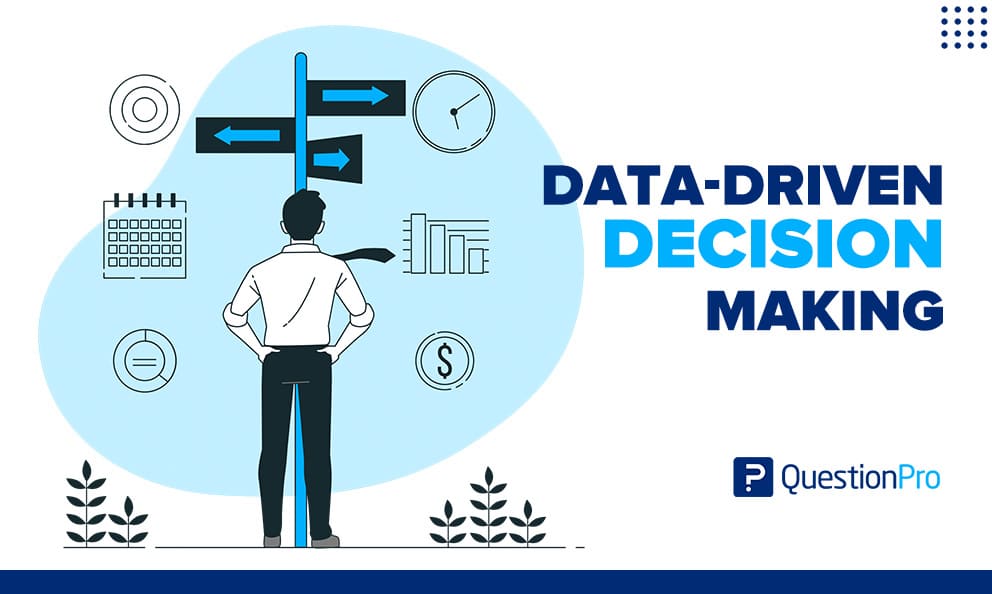
Data-driven decision making is not just a buzzword; it is a critical approach that enables organizations to thrive and remain competitive. By leveraging data, businesses can make informed decisions that drive growth, efficiency, and innovation. This article explores the significance of data-driven decision making, its benefits, and best practices for implementation.
Understanding Data-Driven Decision Making
Data-driven decision making involves using data analysis and interpretation to guide business decisions. Instead of relying on intuition or past experiences, organizations utilize empirical evidence derived from data to shape their strategies. This approach ensures that decisions are based on factual, quantifiable information, reducing the risk of errors and enhancing the overall decision-making process.
The Importance of Data-Driven Decision Making
Enhanced Accuracy and Objectivity
One of the primary advantages of data-driven decision making is its ability to enhance accuracy and objectivity. By relying on concrete data, businesses can avoid biases and subjective judgments that often lead to poor decisions. This objectivity ensures that decisions are aligned with the actual needs and realities of the market.
Improved Efficiency and Productivity
Data-driven decision making streamlines operations by identifying inefficiencies and areas for improvement. By analyzing data, organizations can pinpoint bottlenecks, optimize processes, and allocate resources more effectively. This leads to increased productivity and reduced operational costs.
Informed Strategic Planning
Strategic planning is crucial for long-term success, and data plays a pivotal role in this process. Data-driven decision making enables organizations to identify trends, forecast future scenarios, and develop strategies that are both proactive and reactive to market changes. This foresight helps businesses stay ahead of the competition and adapt to evolving market conditions.
Better Customer Insights
Understanding customer behavior is essential for delivering superior products and services. Data-driven decision making provides valuable insights into customer preferences, purchasing patterns, and feedback. This information allows businesses to tailor their offerings to meet customer needs, enhancing customer satisfaction and loyalty.
Key Components of Data-Driven Decision Making
Data Collection
The foundation of data-driven decision making lies in effective data collection. Organizations must gather relevant data from various sources, including internal systems, customer interactions, market research, and social media. Ensuring data quality and accuracy is paramount to deriving meaningful insights.
Data Analysis
Once data is collected, the next step is analysis. Utilizing advanced analytical tools and techniques, businesses can process large volumes of data to identify patterns, correlations, and trends. Data analysis transforms raw data into actionable insights that inform decision-making.
Data Interpretation
Interpreting data correctly is crucial for making informed decisions. Organizations need skilled analysts who can draw meaningful conclusions from data and present them in a comprehensible manner. This involves understanding the context of the data and recognizing its implications for business strategies.
Data Integration
Data integration involves combining data from different sources to provide a holistic view of the business environment. This integrated approach ensures that decision-makers have access to comprehensive information, enabling them to make well-rounded decisions that consider all relevant factors.
Implementation of Insights
The final component of data-driven decision making is implementing the insights gained from data analysis. This requires a structured approach to apply the findings to business strategies, operations, and processes. Continuous monitoring and evaluation of the implemented strategies are essential to ensure their effectiveness and make necessary adjustments.
Best Practices for Implementing Data-Driven Decision Making
Foster a Data-Driven Culture
Creating a data-driven culture within the organization is essential for successful implementation. This involves promoting the importance of data in decision-making processes and ensuring that all employees understand the value of data. Training programs and workshops can help build data literacy across the organization.
Invest in the Right Tools and Technologies
To effectively collect, analyze, and interpret data, businesses need to invest in the right tools and technologies. This includes data management platforms, analytics software, and visualization tools. Leveraging advanced technologies such as artificial intelligence and machine learning can further enhance data analysis capabilities.
Ensure Data Quality and Security
Data quality is critical for accurate decision-making. Organizations must implement stringent data governance practices to ensure data accuracy, consistency, and reliability. Additionally, data security measures are essential to protect sensitive information and maintain customer trust.
Encourage Collaboration and Communication
Collaboration and communication are key to successful data-driven decision making. Encouraging cross-functional teams to work together and share insights fosters a holistic approach to decision-making. Regular meetings and discussions can facilitate the exchange of ideas and ensure alignment with organizational goals.
Monitor and Evaluate Outcomes
Continuous monitoring and evaluation of the outcomes of data-driven decisions are essential to measure their effectiveness. This involves tracking key performance indicators (KPIs) and analyzing the impact of decisions on business performance. Feedback loops help organizations refine their strategies and improve future decision-making processes.
Challenges in Data-Driven Decision Making
Data Overload
One of the common challenges organizations face is data overload. With the vast amount of data available, it can be overwhelming to identify which data is relevant and valuable. Implementing effective data management practices and prioritizing critical data can help mitigate this issue.
Resistance to Change
Introducing a data-driven approach often requires a cultural shift, which can be met with resistance from employees accustomed to traditional decision-making methods. Addressing concerns, providing training, and demonstrating the benefits of data-driven decision making can help overcome resistance.
Lack of Expertise
Data-driven decision making requires skilled professionals who can analyze and interpret data accurately. A shortage of such expertise can hinder the implementation process. Investing in training and hiring experienced data analysts can address this challenge.
Integration Issues
Integrating data from various sources can be complex, especially when dealing with legacy systems and disparate data formats. Utilizing data integration tools and standardizing data formats can streamline this process and ensure seamless integration.
Conclusion
In today’s dynamic business environment, data-driven decision making is indispensable for achieving sustainable growth and maintaining a competitive edge. By leveraging data, organizations can make informed decisions that enhance accuracy, efficiency, and customer satisfaction. Implementing best practices and addressing challenges head-on can pave the way for successful data-driven decision making.